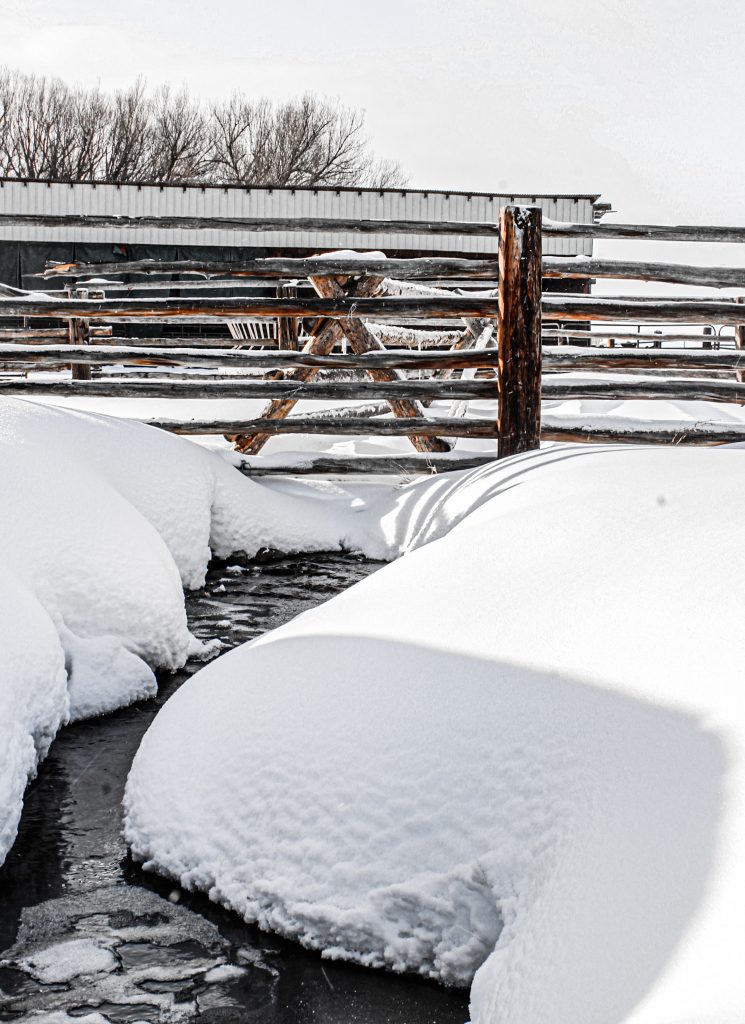Water Forecast: USDA NRCS publishes Wyoming water supply outlook for the beginning of the year

On Jan. 1, the U.S. Department of Agriculture’s (USDA) Natural Resources Conservation Service (NRCS) published the January 2023 Wyoming Basin and Water Supply Outlook Report, which analyzes snowpack, precipitation, streamflow and reservoir storage across the state of Wyoming.
The report assesses the water supply outlook for the entire state of Wyoming as well as individual basins including the Snake River, Madison Headwaters, Yellowstone River, Wind River, Big Horn River, Shoshone River, Powder River, Tongue River, Belle Fourche River, Cheyenne River, Upper North Platte, Lower North Platte, Laramie River, Sweetwater River, South Platte River, Little Snake River, Upper Green River, Lower Green River and Upper Bear River basins.
Making forecasts
When it comes to making forecasts for the Wyoming basin and water supply outlook, NRCS explains most annual streamflow in the western U.S. originates as snowfall, which accumulates in the mountains during winter and early spring, and as snowpack accumulates, hydrologists begin to estimate the runoff that will occur when it melts.
“Measurements of snow water equivalent (SWE) at selected manual snow courses and automated snowpack telemetry (SNOTEL) sites, along with precipitation, antecedent streamflow and indices of the El Niño/Southern Oscillation are used in computerized statistical and simulation models to prepare runoff forecasts,” reads the report. “Unless otherwise specified, all forecasts are for flows which would occur naturally without any upstream influences.”
NRCS notes forecasts are by no means perfect. In fact, they explain streamflow forecast uncertainty arises from three sources – uncertain knowledge of future weather conditions, uncertainty in the forecasting procedures and errors in the data.
Therefore, it is important individuals interpret these forecasts as a range of values with specific probabilities of occurrence instead of a single value.
“The middle of the range is expressed by the 50 percent exceedance probability forecast, for which there is a 50 percent chance the actual flow will be above and a 50 percent chance the actual flow will be below this value,” NRCS explains in the report. “To describe the expected range around this 50 percent value, four other forecasts are provided – two smaller values at 90 percent and 70 percent exceedance probability and two larger values at 30 percent and 10 percent exceedance probability, respectively.”
“For example, there is a 90 percent chance the actual flow will be more than the 90 percent exceedance probability forecast. The others can be interpreted similarly,” NRCS adds.
The report further notes the wider the spread among these values, the more uncertain the forecast will be. As the season progresses, forecasts will become more accurate, primarily because a greater portion of the future weather conditions become known.
Lastly, NRCS notes the median is the official normal for snowpack, precipitation, reservoir storage and streamflow calculations.
Snowpack and
precipitation
The NRCS notes SWE across the state of Wyoming for the first month of the year is forecast at 120 percent of the median.
SWE in the Sweetwater River Basin is the highest at 164 percent of the median, and South Platte River Basin has the lowest SWE at 45 percent of the median.
Sweetwater River Basin also reported the highest precipitation at 187 percent of the median, and South Platte River Basin, again, reported the lowest precipitation amount at 100 percent of the median.
Streamflow
According to NRCS, forecast median streamflow yields for basins across the state of Wyoming – except the Green, Little Snake and Cheyenne River basins – during the months of April through September averaged 108 percent. These three exceptions had forecast median streamflow yields of 109 percent for the same time period.
NRCS notes the Snake River and Yellowstone River basins should yield about 111 percent and 115 percent of the median, respectively, while yields from the Wind and Big Horn River basins should be about 108 percent and 100 percent of the median, respectively.
Yields from the Shoshone River Basin is forecast to be 100 percent of the median, and yields from the Powder and Tongue River basins should be about 90 percent and 104 percent of the median, respectively.
Yield for the Cheyenne River Basin should be about 91 percent of the median. Yields for the Sweetwater, Upper North Platte, Lower North Platte and Laramie Rivers should be about 139 percent, 119 percent, 108 percent and 113 percent of the median, respectively. Yields for the Little Snake and Green River should be 139 percent and 102 percent, according to the NRCS report.
Reservoir storage
Reservoir storage for the entire state of Wyoming averaged 81 percent of median.
Reservoirs in the Snake River Basin reported numbers far below the median at 28 percent.
Big Horn, Cheyenne River, Upper North Platte River and Lower and Upper Green River basin reservoirs also reported numbers below median at 94 percent, 80 percent, 68 percent, 93 percent and 81 percent, respectively.
Reservoirs in the Wind River, Belle Fourche, Tongue River and Lower North Platte basins were near median at 99 percent, 96 percent, 104 percent and 95 percent, respectively. The Buffalo Bill Reservoir on the Shoshone River also reported numbers near median at 102 percent.
Hannah Bugas is the managing editor for the Wyoming Livestock Roundup. Send comments on this article to roundup@wylr.net.





